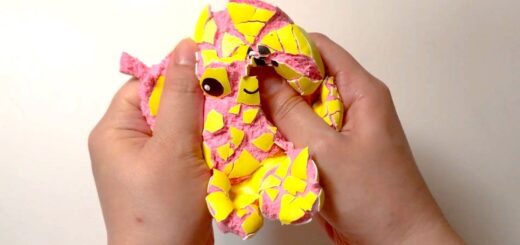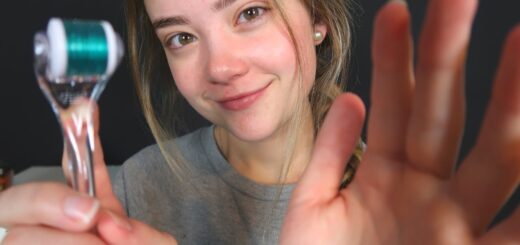Welcome to #PharmTok, Where Pharmacists Become TikTok Stars
[ad_1]
Over the past year, brief wordless videos of pharmacy employees doing what many might perceive as the most monotonous part of the job — sorting and organizing patients’ medications — have been getting tens of millions of views on TikTok. The reason for their popularity? ASMR, or “autonomous sensory meridian response,” described by its fans as a “tingling” sensation, or the feeling of total relaxation.
The peculiar world of ASMR includes almost everything, from whispering words from the dictionary into a microphone, to eating a lobster on camera. For the TikTok videos that can be found under #PharmTok and #Pharmacyasmr, viewers experience ASMR from the sounds of pills being poured onto trays and organized with spatulas.
In a 30-second TikTok viewed 65.4 million times, a blonde woman wearing a mask and scrubs stands behind a pharmacy counter. She spills out the contents of a pill bottle onto the tray in front of her. After separating the big red capsules into groups of five, she pours the rest back into their original bottle, and the isolated amount into a fresh pill bottle. She may not say a word throughout the entire video, but the sounds of pills clacking against each other and the tapping of her spatula is heightened for the ultimate ASMR payoff. Over 10 million users have “hearted” the video so far.
Many don’t understand the hype — and this includes some of the content creators behind #PharmTok’s most popular ASMR videos. In the caption of the aforementioned video, TikTok creator @its_samiiiiii wrote, “Since these are the only videos that get clout, here you guys go.”
But for Amna Akram, a 20-year-old New York City pharmacy employee who’s also in school to get her PharmD, the popularity of ASMR wasn’t such a strange idea.
“I used to watch videos of other people on TikTok, like the slime videos where people just keep putting their hands into slime … It’s so satisfying,” Akram said, recalling some of her own ASMR preferences. She came across a content creator from Australia, who filmed herself counting pills. “And I was like, ‘I can do that.’ And I was reading the comments, people were very interested to learn more.”
From there, she began filming her own pill-counting videos behind the pharmacy counter a little over a year ago. Her most popular video, though, was posted just a month ago. In it, Akram pours out a number of large blue potassium capsules onto a tray, pulling out 30 pills. The video currently has 85.8 million views and 5.6 million likes.
Despite the simplicity of these videos, Akram told MedPage Today that her pill-counting TikToks seem to always stir up heated debates in the comments section, usually about her not wearing gloves or a hairnet (research has shown that gloves don’t offer added protection, and to Akram’s knowledge, there is no hairnet requirement). One user commented, “don’t think you should be posting this”; others came to her defense, with one person writing, “As a pharm tech reading these comments I no longer have faith in humanity.”
“I just wish they understood our job a little bit more because I feel like there’s so much misinformation,” Akram said.
Former pharmacist David Juurlink, MD, PhD, who is now a clinical researcher in pharmacology and toxicology, was not previously aware that videos of pharmacy employees counting pills had gained a sudden rise in popularity on TikTok. After watching some of these videos, Juurlink’s only concern was about the misconception that pharmacists are just “pill-counters.”
“One of the potential problems of a TikTok like that is it might tend to reinforce that notion that all pharmacists do is count pills,” he told MedPage Today.
But, for the most part, Juurlink thought the trend was “kind of cute.” Because of his experience as a pharmacist, he’s very aware of the measures that pharmacists take to keep people safe.
“And so if they want to have some fun in the process, I think that’s just fine,” he said.
[ad_2]
Source by [author_name]

![author['full_name']](https://asmr-vids.com/wp-content/uploads/2021/08/Welcome-to-PharmTok-Where-Pharmacists-Become-TikTok-Stars.jpg)













